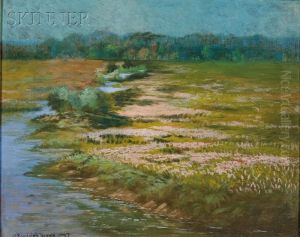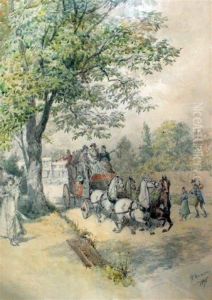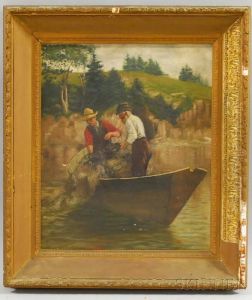Joseph Randolph Brown Paintings
Joseph Randolph Brown, often referred to as J.R. Brown, was an American artist primarily recognized for his contributions as a portrait painter. Born in 1821, Brown's life spanned a period of significant transformation in the United States, which is reflected in the historical context of his work.
Though detailed records of Brown's early life and artistic training are somewhat limited, it is known that he was active during the mid-19th century. During this era, America was experiencing a surge in the demand for portraiture, fueled by the growing middle class and the desire for personal and familial documentation in the absence of photography, which was still in its nascent stages.
Brown's paintings were characterized by their detailed treatment of the subject's features and attire, as well as the use of rich, deep colors. His portraits often captured the essence of his subjects with a dignified realism, a hallmark of the period's style. He worked with oil on canvas, which was the predominant medium for portraitists of his time.
Despite his skill as a portraitist, Joseph Randolph Brown did not gain the same level of fame as some of his contemporaries, such as Thomas Eakins or John Singer Sargent, who were also painting during the latter half of the 19th century. As such, many of Brown's works remain lesser-known, with a portion of his oeuvre potentially still unidentified or attributed to other artists of the period.
Joseph Randolph Brown's career as an artist was ultimately cut short by his untimely death in 1870. His contributions to American art are a part of the rich tapestry of 19th-century portraiture, which served as a foundation for the evolution of American art in subsequent years. While his name may not be widely recognized today, his works remain a testament to the talent and craftsmanship of portrait artists during this transformative period in American history.



